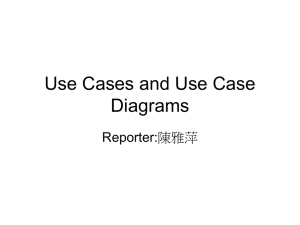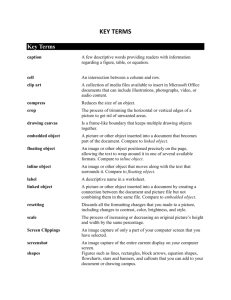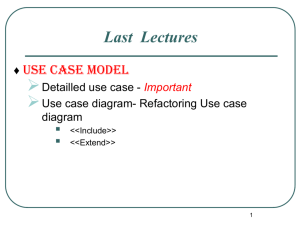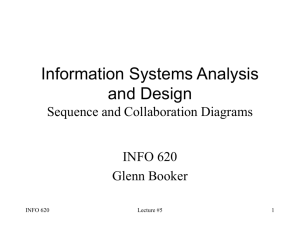Chapter 7 True/False Indicate whether the statement is true or false
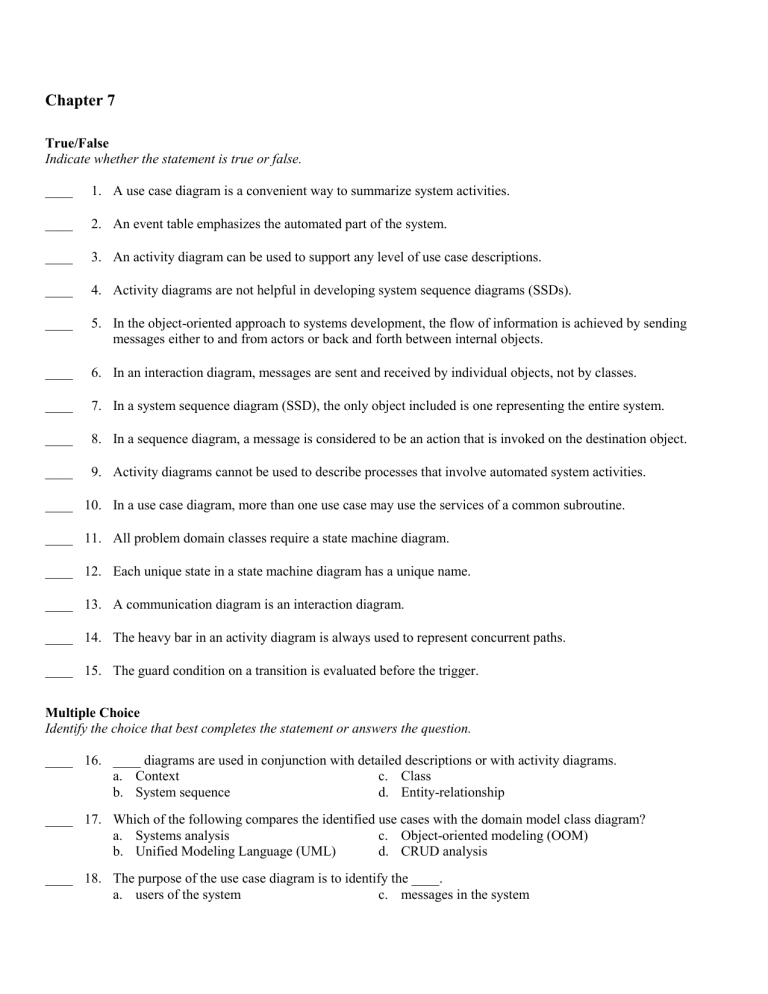
Chapter 7
True/False
Indicate whether the statement is true or false.
____ 1. A use case diagram is a convenient way to summarize system activities.
____ 2. An event table emphasizes the automated part of the system.
____ 3. An activity diagram can be used to support any level of use case descriptions.
____ 4. Activity diagrams are not helpful in developing system sequence diagrams (SSDs).
____ 5. In the object-oriented approach to systems development, the flow of information is achieved by sending messages either to and from actors or back and forth between internal objects.
____ 6. In an interaction diagram, messages are sent and received by individual objects, not by classes.
____ 7. In a system sequence diagram (SSD), the only object included is one representing the entire system.
____ 8. In a sequence diagram, a message is considered to be an action that is invoked on the destination object.
____ 9. Activity diagrams cannot be used to describe processes that involve automated system activities.
____ 10. In a use case diagram, more than one use case may use the services of a common subroutine.
____ 11. All problem domain classes require a state machine diagram.
____ 12. Each unique state in a state machine diagram has a unique name.
____ 13. A communication diagram is an interaction diagram.
____ 14. The heavy bar in an activity diagram is always used to represent concurrent paths.
____ 15. The guard condition on a transition is evaluated before the trigger.
Multiple Choice
Identify the choice that best completes the statement or answers the question.
____ 16. ____ diagrams are used in conjunction with detailed descriptions or with activity diagrams. a. Context b. System sequence c. Class d. Entity-relationship
____ 17. Which of the following compares the identified use cases with the domain model class diagram? a. Systems analysis b. Unified Modeling Language (UML) c. Object-oriented modeling (OOM) d. CRUD analysis
____ 18. The purpose of the use case diagram is to identify the ____. a. users of the system c. messages in the system
b. system boundary d. uses of the system
____ 19. A use case diagram can be derived from a(n) ____. a. class diagram c. event table b. sequence diagram d. context diagram
____ 20. An actor is a(n) ____. a. fictitious person b. role played by someone using the system c. person defining a system use d. external file that communicates with the system
____ 21. The “includes” relationship represents the idea of ____. a. embedding classes within other classes c. classes included within use cases b. one use case being used by another d. embedding states within other states
____ 22. One way to begin the development of a use case diagram is to identify the ____. a. system boundary b. flows of information c. classes d. actors
____ 23. The dashed lines in a system sequence diagram represent ____. a. object lifelines b. object transitions c. transition activities d. messages
____ 24. Which of the following represents a requirements model for the traditional approach to systems development? a. Use case diagrams b. Process descriptions c. Class diagrams d. Activity diagrams
____ 25. Which of the following models are normally completed concurrently by the analyst in the object-oriented approach? a. Context and data flow diagrams b. Entity-relationship and class diagrams c. Process description and class diagram d. Use case diagram and event table
____ 26. Which of the following can be used to describe processes that include manual and automated system activities? a. DFD fragments b. Context diagrams c. Entity-relationship diagrams (ERDs) d. Activity diagrams
____ 27. ____ on a systems sequence diagram indicates a true/false condition where the message is sent if true. a. [ ] b. { } c. ( ) d. *
____ 28. A(n) ____ diagram is a diagram showing the sequence of messages between an external actor and the system during a use case or scenario. a. system sequence c. class d. activity b. statechart
____ 29. In a use case diagram, the use case is symbolized by a(n) ____. a. rectangle c. rounded rectangle d. oval b. stick figure
____ 30. Use cases can be organized by ____. a. subsystem b. grouping all cases that involve a specific actor
c. the needs of the project team d. All of the above
____ 31. In an SSD, ____ between the lifelines represent the messages that are sent or received by the actor or the system. a. dashed lines b. rectangular labels c. lines with arrows d. underlined objects
____ 32. In a state machine diagram, a state is represented by a(n) ____. a. oval b. black dot c. square d. dashed arrow
____ 33. The ____ are the primary models from which other models draw information. a. statechart diagram and problem domain class diagram b. system sequence diagram and activity diagram c. use case diagram and problem domain class diagram d. use case description and use case diagram
____ 34. Which of the following is NOT an element in a transition label? a. origin state b. transition name c. guard condition d. action expression
____ 35. Which of the following is NOT a step in the development of a state machine diagram? a. List all the status conditions for an object b. Identify state exiting transitions c. Expand the name of each state to identify concurrent activities d. Sequence the state-transition combinations in the correct order
Completion
Complete each statement.
36. A(n) ____________________ diagram shows the various user roles and how those roles use the system.
37. A(n) ____________________ is the vertical line under an object on a sequence diagram that shows the passage of time for the object.
38. The ____________________ is the Unified Modeling Language (UML) notation for repeat or loop on a message.
39. A(n) ____________________ is a condition during an object’s life when it satisfies some criterion, performs some action, or waits for an event.
40. On a system sequence diagram (SSD), ____________________ conditions are used to evaluate any type of test that determines whether a message is sent.
41. On a system sequence diagram, ____________________ indicate a true/false condition.
42. On a system sequence diagram (SSD), a(n) ____________________ of data is shown as a dashed line with arrow.
43. ____________________ diagrams can be used to describe any business processes done by people in an organization.
44. In a use case diagram, a(n) ____________________ denotes the boundary between the environment, where the actors reside, and the internal components of the computer system.
45. ____________________ is the condition of being in more than one state at a time.
Essay
46. What is the starting point for the development of a use case diagram, if an event table has not been created?
State the preconditions.
47. What are the steps involved in the development of a system sequence diagram (SSD) based on an activity diagram?
48. What is the difference between a system sequence diagram (SSD) and a state machine diagram?




